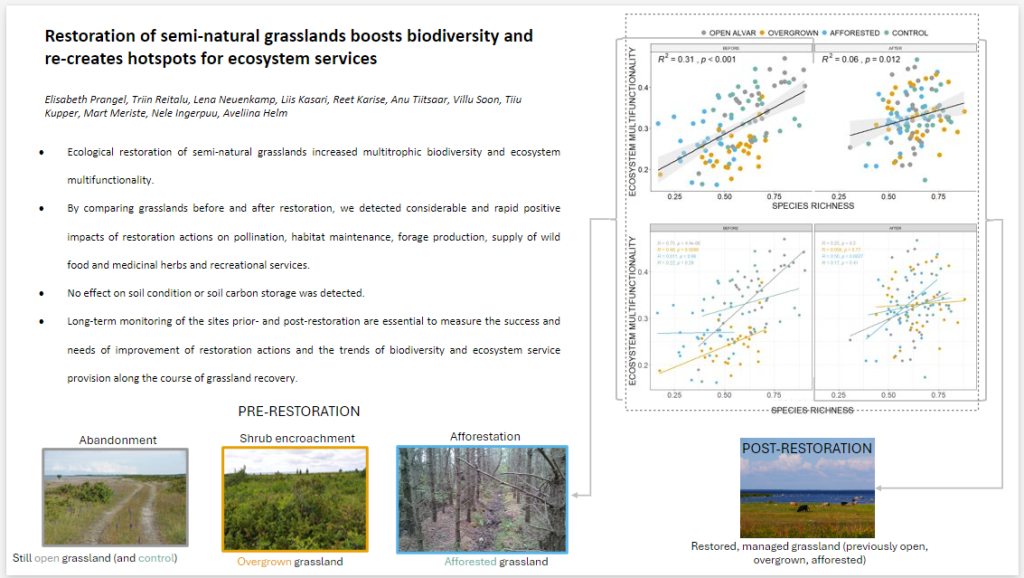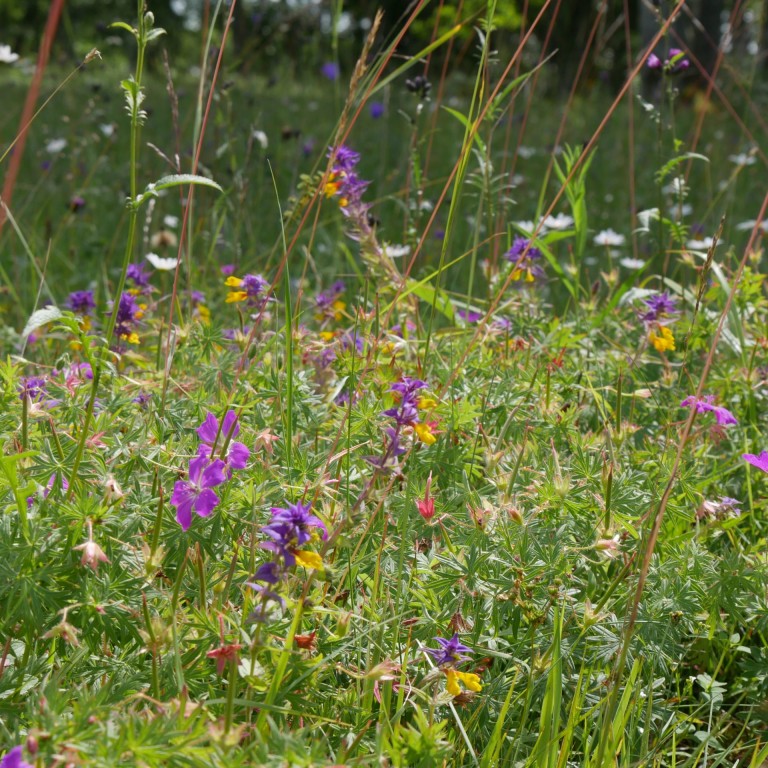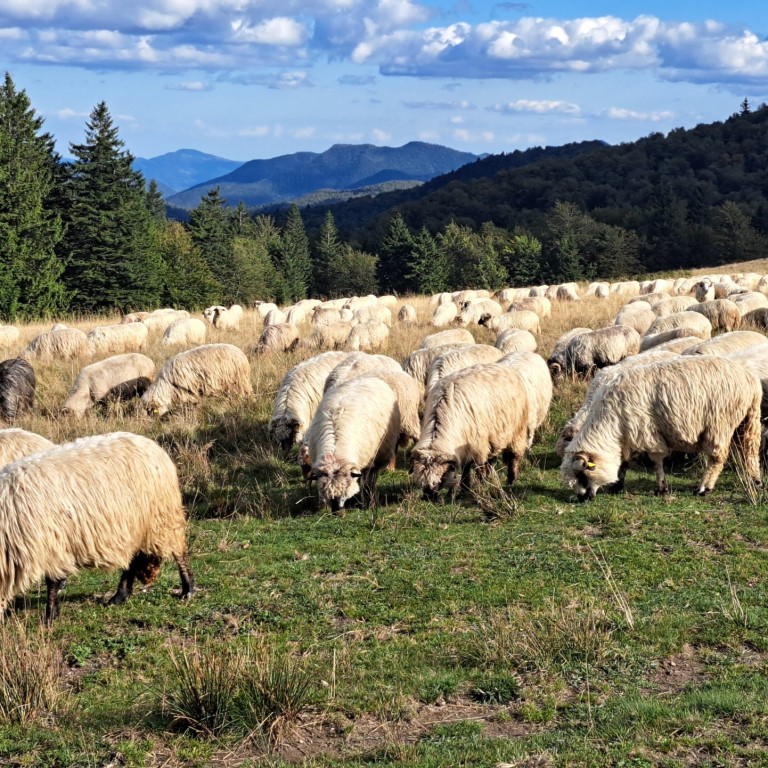As a result of a recent study, the significant impact of grassland restoration on biodiversity, ecosystem service provision and climate change mitigation is confirmed.
Based on the data collected during field work in West Estonia from 2014 to 2016 (pre-recovery monitoring) and 2019 (post-recovery monitoring), it can be confirmed that restoring degraded grasslands supports the recovery of habitat biodiversity which in turn promotes ecosystem functioning and increases the steady supply of ecosystem services and general ecosystem multifunctionality. Response to grassland restoration can vary in relation to the degradation severity and duration of negative impacts, characteristics of the habitat and taxa inhabiting it or management actions and climatic conditions.
“Additional factors like drought amplified by anthropogenic climate change can influence ecosystem recovery and the relationship between biodiversity and ecosystem multifunctionality, putting strain on the habitat recovery,” explains the study's importance by the first author of the article, Elisabeth Prangel, a doctoral student in the Landscapes Biodiversity Workgroup.
"Yet, grasslands especially species-rich dry grasslands have found to show high resilience to climate change and drought impacts, recovering relatively fast from the disturbance impacts. Considering this, semi-natural grasslands can be called biodiversity and ecosystem service hotspots in Europe and the restoration and preservation of remaining grassland fragments should be of great importance."
Article can be read here.
More information:
Elisabeth Prangel





